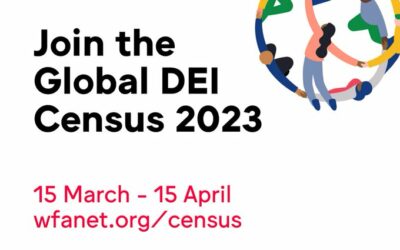WFA asked industry experts from four of its strategic partners to identify the trends that will shape the marketing industry this year.
Nick Broomfield, Executive Director and CMO, The Customer Framework, on a new approach for marketing transformation initiatives: “2020 will be the year that sees organisation and culture overtake technology as the most important components of marketing transformation. Hence, in 2020, as smart CMOs focus on people, process and culture change to drive customer centric marketing and digital transformation, we predict the transformation success rate, and the commercial success that comes with it, will improve significantly.”
Ruben Schreurs, CEO, Digital Decisions, on the definitive change of ownership standards when it comes to data: A key theme for brands we speak with is accountability, where decisions have to have a proper business case behind them and measuring risk has become integral to digital media operations. Whether it’s ad fraud, brand safety, data protection or ad quality standards – we can expect more structural oversight and enforced accountability for the media partners of brands, including both technology platforms to media agencies.”
Stuart Pocock, Founder and Managing Partner, The Observatory International, says marketers will take a more cautious view on in-housing: “Agency in-housing as an option will remain towards the top of many marketers’ agendas in 2020, though we predict less enthusiasm for ‘full-service’ options.
Christian Polman, Chief Strategy Officer, Ebiquity, on aligning brand purpose with business performance: “In 2020, marketing leaders will refocus the purpose of marketing for their organisations on its ability to drive financial performance. In so doing, they will enhance the ways in which the discipline can best deliver growth and drive business transformation. Read more: https://bit.ly/2Si9qt8
On 3 February, the French government and the French Audiovisual Council (CSA) signed a self-regulatory Charter (“Charte Alimentaire”) to promote healthy lifestyles in advertising and audiovisual programs for the period 2020-2024. It is the third iteration of the Charter which was first adopted in 2009, then renewed in 2013. Many food and beverage companies operating in France are also signatories of the EU Pledge, a commitment by 22 leading food and beverage companies to restrict food advertising to children under 12 years. Only products which fulfil common nutrition criteria can be advertised to this age group. Across the EU, this has led to an estimated 48% reduction in children’s exposure to products that don’t meet the EU pledge nutrition criteria comparing 2005 against 2014 data. Looking only at children’s programmes, this drop is 83% (see 2016 annual monitoring report).
Marketing leaders take action on harmful online content
Davos, 22 January: The Global Alliance for Responsible Media (GARM) has unveiled its strategy to create a more sustainable and responsible digital environment that protects consumers, the media industry and society.
The coalition will accelerate progress by means of a three-pronged action plan starting June onwards:
Shared definitions: The Alliance has developed and will adopt common definitions to ensure that the advertising industry is categorizing harmful content in the same way. The 11 key definitions covering areas such as explicit content, drugs, spam and terrorism will enable platforms, agencies and advertisers to a shared understanding of what is harmful content and how to protect vulnerable audiences, such as children. Establishing these standards is the first step needed to stop harmful content from being monetised through advertising.
Common tools and systems: The Alliance will develop and adopt common tools that will create better links across advertiser controls, media agencies tools, and the platform efforts to categorize content. Creating these linkages will improve transparency and accuracy in how media investments are steered towards safer consumer experiences – in images, videos and editorial comments.
Independent oversight: The Alliance will establish shared measurement standards so that the industry and platforms can fairly assess their ability to block, demonetize, and take down harmful content. Transparency via common measures, methodology for advertisers, agencies and platforms is key to guiding actions that enhance safety for consumers. Adopting key measures and agreeing to independent verification will be key to driving improvement for all parties, which we will look to track annually. A special working group from the GARM will be activating this strategy starting in April.
This new strategy is a major step forward to accelerating and integrating important efforts on improving safety across the media supply chain. The long-term vision is to drive growth and connectivity for society on ad-supported media platforms, which foster and enable civil dialogue. Read more: https://bit.ly/2uZSj6y
2020, a time to elevate marketing, says WFA President, Raja Rajamannar
“…….Secondly, marketers will need to successfully harness the opportunities of AI. The promise it holds for more relevant, opportune and personalized communications at scale is unprecedented. The ability to successfully embrace AI will determine which brands survive and which thrive in the coming years.
Finally, brand owners must put in place the necessary systems and safeguards for brand-safe environments in the digital age. The democratization of technology is exciting, but, as we’ve seen, it does not come without risk. As the universe where our products and services appear grows and becomes more and more automated, we must take extra care to protect our most sacred asset, our brands.
As the ultimate funders of the digital ecosystem, it is incumbent on us to drive the change that will ultimately better protect and better serve consumers and society at large”. Read full:https://bit.ly/2STZDZm
A future for the world’s children?
A WHO-UNICEF-Lancet Commission
Published: February 18, 2020
The health and wellbeing of children now and in the future depends on overcoming new challenges that are escalating at such speed as to threaten the progress and successes of the past two decades in child health. The climate emergency is rapidly undermining the future survival of all species, and the likelihood of a world in which all children enjoy their right to health appears increasingly out of reach. A second existential threat that is more insidious has emerged: predatory commercial exploitation that is encouraging harmful and addictive activities that are extremely deleterious to young people’s health.
The 2010 WHO Set of recommendations on the marketing of foods and non-alcoholic beverages to children recognises the role of self- and co-regulation in reducing the impact of ‘HFSS’ marketing on children. The 2018 UN political declaration on the prevention of NCDs invites the private sector to make further commitments in this area



